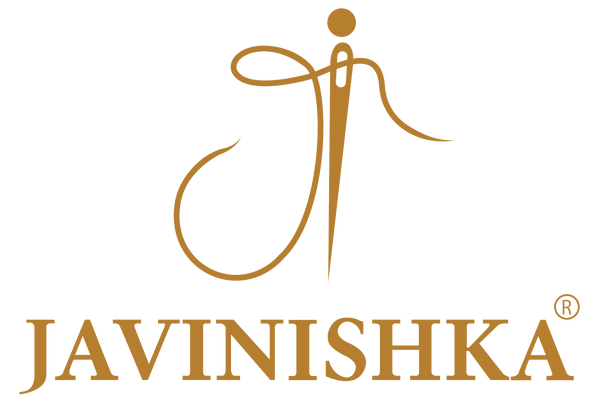Finding pants that actually fit can feel like trying to solve a puzzle with missing pieces. From misleading size labels to variations in international charts and the endless debate between trousers and pants, it’s no surprise that most men settle for “close enough.” But in 2025, with better fit tech and global fashion standards, there’s no reason your pants shouldn’t fit like they were tailored just for you.
This mens pant size guide will explain it all with minute details, right from how to measure pant size accurately to reading a pant size chart for men, understanding fit types, and knowing which cuts work best for your body type.
Pant Size Guide: Why Accurate Measurement Matters
Before diving into numbers and fits, here’s the truth: guessing your pant size based on a past purchase is a recipe for wardrobe malfunction. Every brand uses different patterns, and fabrics behave differently when worn or washed. Proper measurement ensures:
- Reduced returns
- Better comfort and movement
- Accurate style (slim vs. regular vs. relaxed)
- Longevity in wear
Understanding how to measure pant size, especially your waist, inseam, and hip, can save you from unnecessary exchanges and buyer’s remorse.
Pant Size Chart for Men (India, US, UK, EU)
Men's pants sizes usually revolve around waist and inseam measurements, both taken in inches. However, each region has its own size labelling system.
In India and the US, a common size format is waist × inseam, for example, 32 × 32. UK sizes may reflect waist sizes in inches but include slightly more generous fits in formal trousers. European labels often use a two-digit number like 46, 48, 50 and so on, which correspond to waist measurements in centimeters.
Below is a standard reference using waist and inseam data:
|
Size Label |
Waist (inches) |
Inseam (inches) |
Indian/US |
UK |
EU |
|
XS |
26–28 |
28–30 |
28 |
28 |
44 |
|
S |
28–30 |
30–32 |
30 |
30 |
46 |
|
M |
30–32 |
31–33 |
32 |
32 |
48 |
|
L |
32–34 |
32–34 |
34 |
34 |
50 |
|
XL |
34–36 |
33–35 |
36 |
36 |
52 |
|
XXL |
36–38 |
34–36 |
38 |
38 |
54 |
|
3XL |
38–40 |
34–36 |
40 |
40 |
56 |
When buying pants for men online, especially from international retailers, always refer to their brand-specific pant size chart for accuracy.
International Men’s Pants Size Conversion Chart
If you shop across US, UK, Indian or European stores, you need to convert between regional sizing standards. Most Indian and US sizes are in inches. European sizes are in centimeters. You can convert inches to centimeters by multiplying by 2.54. So, a waist size of 32 inches converts to approximately 81 centimeters.
Conversion tables also help when buying Linen High Waist Korean Fit Pant or other imported styles that follow Asian size charts. These often run smaller and are more fitted through the hips and waist.
Here’s how basic conversions look:
- US/India 30 = UK 30 = EU 46 = 76 cm waist
- US/India 32 = UK 32 = EU 48 = 81 cm waist
- US/India 34 = UK 34 = EU 50 = 86 cm waist
Always verify with the trousers size chart offered by the brand or platform.
Understanding Men’s Pants Fit Types
Fit types help define the overall silhouette and comfort level of your pants. These include:
- Regular fit: Straight from the waist to the ankle. Works well for most body types.
- Slim fit: Tapered through the thigh and calf. Offers a modern, clean shape.
- Relaxed fit: Slightly roomier throughout, without appearing oversized. Ideal for movement-heavy days or warmer weather.
-
Athletic fit: Built for men with a muscular build. Gives more room in the thigh and seat, with a tapered lower leg.
Choosing a fit also depends on fabric. For example, relaxed fit Linen Pants provide more airflow and freedom compared to denim of the same size. The jeans size chart might show the same waist label, but the fit will feel different.
Men’s Pants Size Based on Body Types
Correctly matching your pants size with your body type leads to better posture, appearance and comfort. Here’s how body structure influences pant selection:
- Athletic build: Pants with extra thigh and hip room work best. Athletic or relaxed fits offer the most comfort without compromising shape.
- Tall and lean: Slim fits enhance vertical proportions. Ensure you pick the correct inseam length to avoid high-ankle exposure.
- Shorter build: Tapered or straight fits work better than baggy styles. Look for inseams between 28 and 30 inches to avoid rolling up hems.
- Plus-size or broad waist: Choose pants with some stretch or elastic waistband. Chino Shorts with flexible fabric or back-elastic bands offer better mobility for larger builds.
You can also check out plus-size Linen Shorts or relaxed trousers with a flattering drape for wide hips and thighs.
Trouser vs Pants – Understanding the Difference in Sizing
If you’ve ever ordered the same waist size in trousers and pants and got two completely different fits, you’re not alone. The sizing logic behind each is not the same and that’s exactly why understanding the difference can save you from returns and disappointments.
Trousers: Precise, Tailored and Less Forgiving
Trousers are generally worn in formal or semi-formal settings — for office wear, meetings, or ceremonial occasions. Their construction focuses on clean lines and close-fitting cuts, leaving very little room for stretch or adjustment.
- Waistbands are fixed and often reinforced
- The fabric is structured (wool, polyester blends, etc.)
- The cut is designed to follow your body’s natural frame
If you're browsing through pants for men online, always read the product description carefully. Even a half-inch off on the waist or inseam can make a noticeable difference in how they feel. That’s why sizing here needs to be accurate and specific, often based on a detailed trousers size chart that includes waist, inseam, rise, and hip.
Pants: Casual, Flexible and Fit-Friendly
Pants are more versatile and include chinos, cargos, joggers and everyday jeans. The primary focus here is comfort and adaptability. That’s why pants in the same size as trousers often feel roomier.
- Waistbands may feature elastic, drawstrings or stretch panels
- Fabrics are more relaxed (cotton, denim, blends with elastane)
- Fits range from slim to relaxed and are made for movement
This means your sizing can vary slightly across categories, but the fit still works. For example, a size 34 in structured trousers may feel snug around the thighs and hips, whereas a size 34 in cotton chinos may give you a relaxed, everyday fit.
How to Shop Smarter Based on This
When shopping online, check the product category first: is it listed as trousers or casual pants?
- If it's trousers, refer to a detailed measurement chart and lean toward exact sizing
- If it’s pants, you’ll likely get a more forgiving fit, and you can choose based on fit preference (slim, straight, relaxed)
- This small awareness goes a long way in avoiding ill-fitting returns.
Trousers are designed to look sharp. Pants are designed to feel relaxed. Sizing them the same way will only lead to confusion. Choose the fit that suits the occasion and always refer to the respective size guide as they are not meant to be measured by the same yardstick.
Trousers Size Chart – How It Differs by Fabric & Cut
Different trousers follow different sizing behaviors depending on the fabric, cut, and purpose. A 32-inch waist may feel completely different in two types of trousers, even if the label reads the same.
Wool-blend formal trousers are typically structured and have minimal give. They sit closer to the body and often follow European grading systems that require accurate waist, hip and rise measurements. On the other hand, cotton-based chinos offer more flexibility and are graded with comfort in mind.
Similarly, stretch fabrics, including spandex or elastane blends, can allow 0.5 to 1 inch of give at the hips or thighs without affecting the structure.]
Here’s a comparative chart that shows how a size 32 can feel across different fabrics and cuts:
|
Fabric Type |
Cut Style |
Waist Size (Labelled) |
Expected Fit Feel |
Ideal Use Case |
|
Wool Blend (Non-Stretch) |
Flat Front |
32 in |
Feels tight at the waist and seat. Minimal flexibility. Requires precise measurement. |
Formal events, business attire |
|
Cotton Twill |
Pleated Front |
32 in |
More forgiving at the thighs and hips. Comfortable for broader builds. |
Office wear with movement |
|
Linen Blend |
Straight Cut |
32 in |
Light and slightly loose. Can feel airy or oversized if not tucked properly. |
Summer, casual settings |
|
Stretch Fabric (Poly-Spandex) |
Slim Fit |
32 in |
Adapts to movement. Feels snug but not tight. Comfortable for extended wear. |
Travel, daily wear |
|
Pure Cotton |
Tapered Leg |
32 in |
Fitted around calves and thighs. Can feel stiff initially but breaks in with wear. |
Smart casual, semi-formal looks |
|
Cotton-Linen Blend |
High Waist |
32 in |
Sits above the waist. More structured. Requires balanced styling to avoid bunching. |
Styling-focused, fashion-led choices |
What This Means for Sizing Decisions
- A 32-inch waist in wool trousers needs exact measurement, especially if there’s no stretch.
- In linen or cotton-linen, the same size may feel breezier. You might need to size down if you prefer a snug fit.
- In stretch trousers, the waistband can adjust up to an inch, offering flexibility without compromising the silhouette.
- Pleated cuts give extra space at the thigh, while tapered legs focus more on calf and ankle shaping.
When reviewing any trousers size chart, don’t just rely on the waist size. Always factor in fabric, stretch percentage, rise, and your comfort preferences. This is particularly important when choosing between korean fit linen pants and structured wool blends, they both look sharp, but fit and feel vastly different.
Impact of Fabric on Pants Fit and Feel
The choice of fabric has a direct effect on how your pants feel and behave throughout the day. Some fabrics adapt to your movements, while others restrict them.
- Cotton: Comfortable but may shrink slightly after multiple washes. Found in chinos and some formal wear.
- Linen: Breathable and loose-fitting. Ideal for summer or humid conditions. Often used in Striped Linen High Waist Korean Fit Pants.
- Denim: Structured and durable. Best when pre-washed. Look for options that offer a hint of stretch for comfort.
- Poly-viscose or wool blends: Common in formal trousers. Typically stiffer and require accurate sizing.
The weight of the fabric also matters. Heavier fabrics hold their shape but may reduce flexibility. Lighter ones like linen are soft but wrinkle easily. If you are selecting Korean fits, make sure to verify whether the brand offers true-to-size or a tighter cut that needs upsizing.
Common Mistakes to Avoid When Measuring Pant Size
Accurate measuring is crucial. Here are common mistakes that can impact the accuracy of your men’s pant size guide:
- Measuring over existing clothes leads to larger numbers. Always measure on bare skin.
- Measuring without a flat surface or mirror often leads to tape misalignment. Keep the tape level across the body.
- Ignoring the inseam. Always measure from the crotch to the ankle to get the correct leg length.
- Assuming sizes are universal across brands. They are not. Always refer to the brand-specific pant size chart for men.
Measuring your waist and hips properly ensures you get the right size in any category, whether it is Denim Shorts, tapered trousers or joggers.
You can also read more about more dimensional insights over slim fit vs regular fit outfits.
No Sizing Issue At Javinishk
Most men don’t struggle with fashion. They struggle with fit. One brand’s 32 is another brand’s 34. Wool trousers feel tighter than linen ones, even with the same label. And when it comes to online shopping, the gap between what’s shown and what actually arrives often begins with poor sizing logic.
Every piece you see on Javinishka comes with product-specific sizing instructions based on how the fabric behaves, how the cut is structured, and how your body actually moves.
We don’t just help you measure better. We help you choose better. Explore the range today, your fit is already waiting for you.
FAQ's
Q1. What size is 32 in men's pants?
Ans. A men’s size 32 generally refers to a 32-inch waist and is often mapped to a medium build. Depending on the brand’s grading, it might feel roomier or snug, especially if the fabric doesn’t contain stretch elements.
Q2. Is size 34 pants M or L?
Ans. Size 34 usually translates to a Large across most international charts. However, whether it leans closer to Medium or XL depends on the pant’s silhouette like slim, regular, or relaxed and how tightly the waistband is constructed.
Q3. How do I measure my waist and inseam for men’s pants?
Ans. To get accurate waist size, wrap a measuring tape around your torso where the waistband naturally rests. For inseam, measure from the inside of your leg starting at the crotch down to where your ankle meets your foot.
Q4. What size pants should I wear if my waist is 34 inches?
Ans. If your waist measures exactly 34 inches, you’ll likely need a pant labeled 34. For slim-fit or non-stretch trousers, sizing up might provide better ease. Always factor in rise and seat comfort while choosing.
Q5. Is there a standard size chart for Korean fit linen pants?
Ans. Korean-fit linen pants often follow a slimmer, tapered profile with higher rises. While there’s no universal size chart, most sellers provide region-specific conversion guides. Always refer to the brand's own chart for a closer fit.
Q6. How can I convert men’s pants sizes from inches to centimeters?
Ans. To convert inches to centimeters, multiply the inch value by 2.54. For example, a 32-inch waist equals approximately 81.3 cm. It’s recommended to round up when in-between sizes, especially in rigid or structured fabrics.
Q7. Are linen pants true to size or do they run loose?
Ans. Linen pants tend to offer a relaxed drape, which can make them feel slightly roomier than labeled. Though most cuts are true to size, expect minimal structure unless blended with cotton or stretch fibers.
Q8. What size should I choose in chino shorts and denim shorts for a comfortable fit?
Ans. For chino and denim shorts, choose the same waist size as your trousers, but consider your thigh build. If you have muscular legs, a relaxed fit may suit better. Stretch fabric enhances comfort without compromising silhouette




